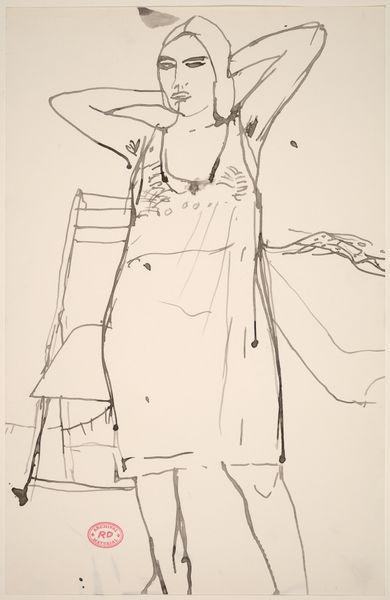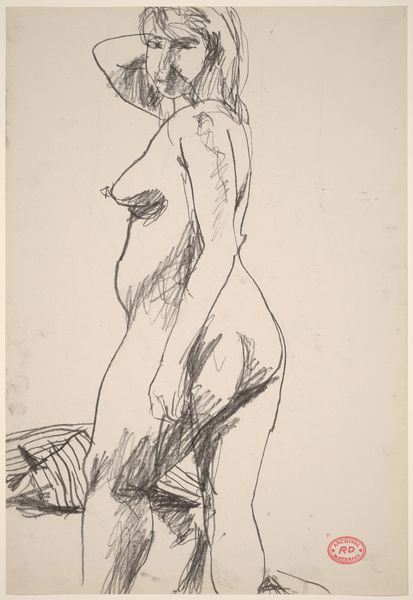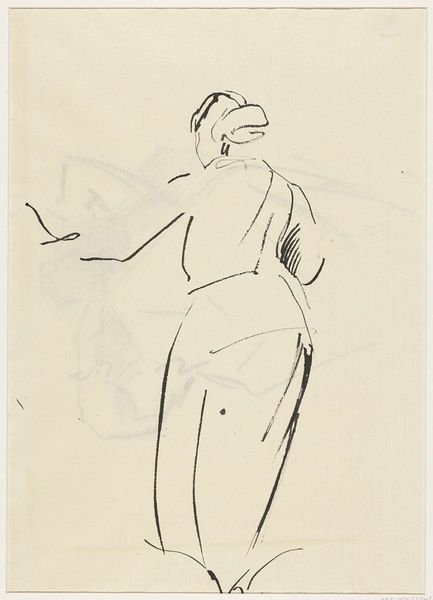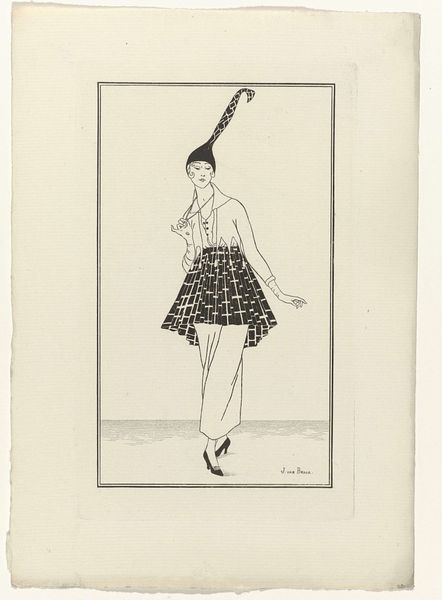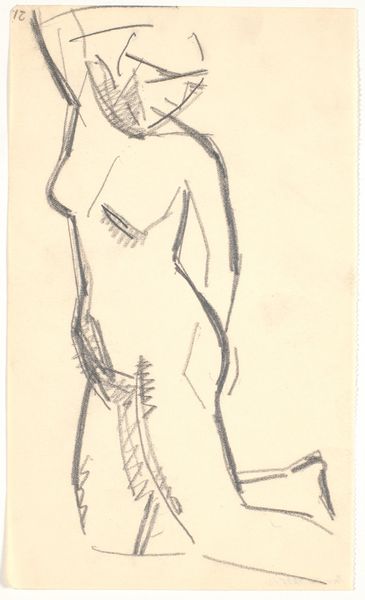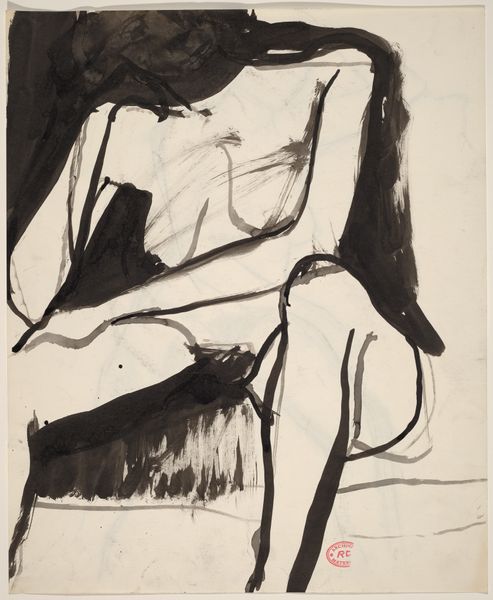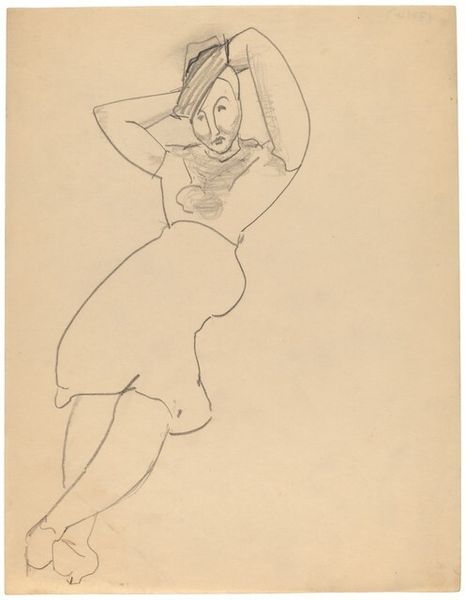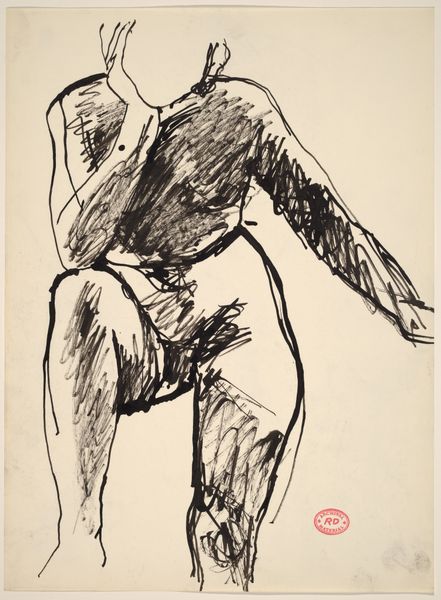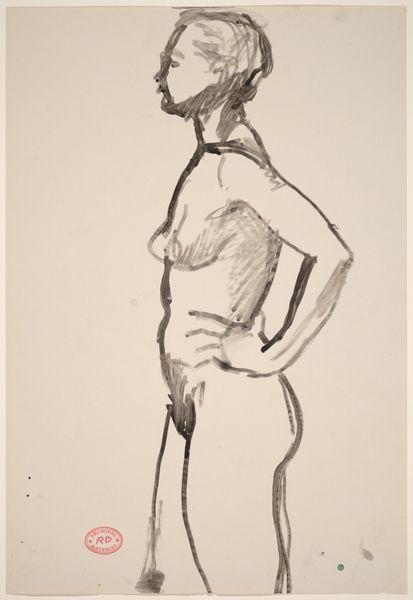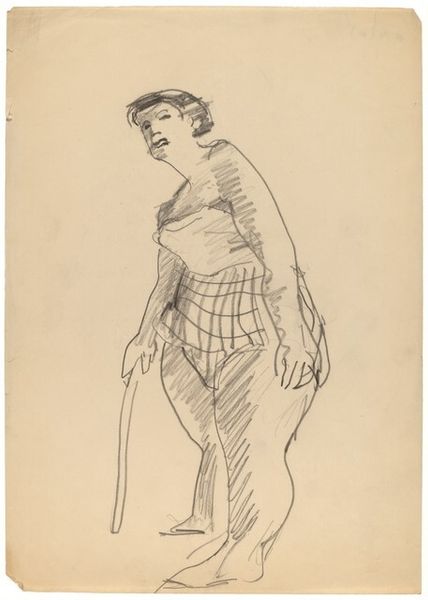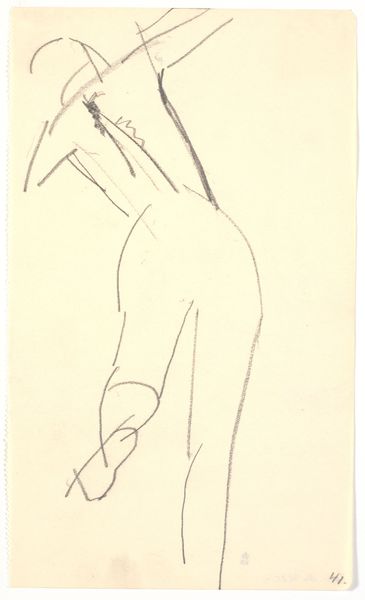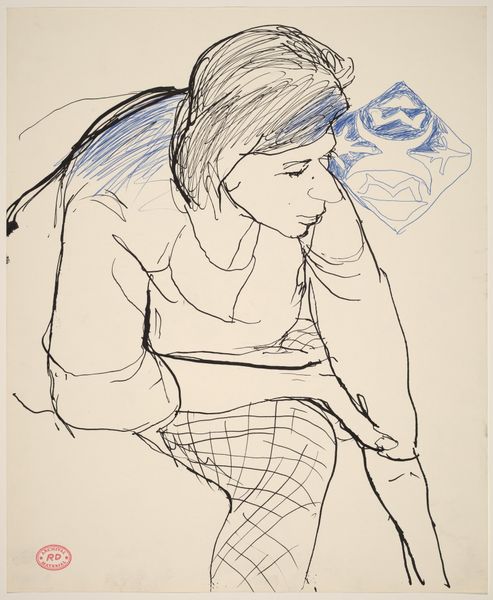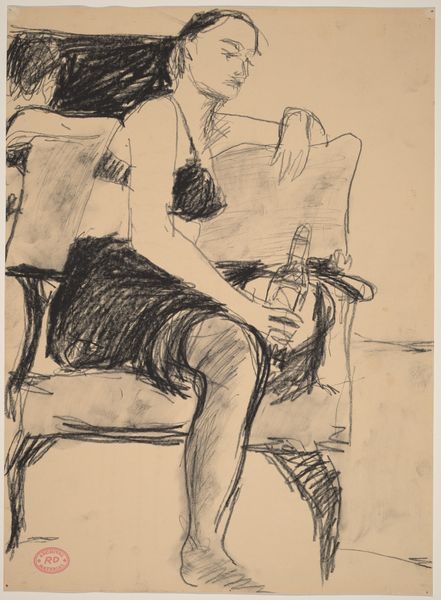
drawing, ink
#
drawing
#
figuration
#
ink
#
expressionism
#
line
Dimensions: overall: 35 x 45.1 cm (13 3/4 x 17 3/4 in.)
Copyright: National Gallery of Art: CC0 1.0
Curator: Let's consider this ink drawing, aptly titled "Dancer," by Max Pechstein, circa 1910. It strikes me with its simple, direct, expressionistic lines. Editor: My first impression is melancholy. The stark black ink on the off-white paper evokes a sense of starkness and introspection. Even the dancer's pose—somewhat slumped, reaching out—suggests a burdened spirit. Curator: I find that interesting. The application of ink reveals much. Notice how the artist used varying thicknesses and pressures to create depth and movement. The rough strokes for the ruffled skirt, for instance, contrasts sharply with the cleaner lines defining her face. How might that speak to Pechstein's engagement with material practices during that time? Editor: Well, context is vital. Remember, this was a period of great social upheaval in Germany. Expressionism often mirrored societal anxieties. Pechstein, as a member of Die Brücke, was acutely aware of the changing dynamics between performers and their audience and gender roles—a dancer on stage was often perceived through a male lens. The stark contrast in materials reflects this dichotomy, perhaps? Curator: Yes, absolutely. It could also signify a tension between performance and performer, between the crafted illusion and the worker that produced it. Pechstein’s choice of medium makes the piece feel raw, almost unfinished, drawing attention to its making and disrupting art's commercial expectations. Editor: It is Expressionistic, and the performative body can easily be interpreted with the background suggestive of a stage, or the artist himself, or his patron. The way that these expressionistic and seemingly spontaneous artworks circulate reflects back into its creation, becoming very embedded within an artist's reputation and value. Curator: The power of the artwork is amplified because its raw creation challenges the conventions and values embedded into its production. Editor: Exactly. The tension within the scene challenges expectations about the spectacle and those participating. It invites an audience to do so, too.
Comments
No comments
Be the first to comment and join the conversation on the ultimate creative platform.
